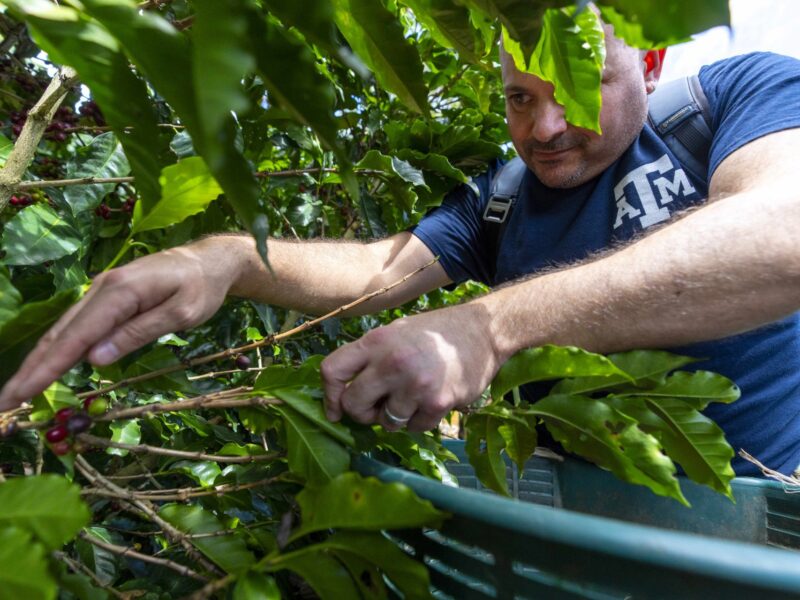Board Of Regents Approves Center For Greenhouse Gas Management In Agriculture And Forestry

The Texas A&M University System Board of Regents has approved the establishment of the Texas A&M Center for Greenhouse Gas Management in Agriculture and Forestry — a joint organization of Texas A&M AgriLife Research and Texas A&M University.
The center will bring together expertise across Texas A&M to advance the abilities of agriculture and forestry systems to meet a new paradigm of safe, affordable food and fiber production that also strives toward a minimal carbon footprint, with a goal of net-zero emissions.
“This Center for Greenhouse Gas Management will leverage research, teaching and extension capabilities across Texas A&M, forge new inroads with industry and become the most collaborative carbon and greenhouse gas program in the world,” said John Sharp, Chancellor of The Texas A&M University System.
Formation of the center is a response to U.S. greenhouse gas emissions, which in 2019 constituted the second highest percentage in the world at 15%, according to the U.S. Environmental Protection Agency. Agriculture contributed less than 10% of that amount.
“Though production agriculture is a minor contributor to U.S. greenhouse gas emissions, our experience and influence across all life sciences puts Texas A&M AgriLife at the center of new discoveries, technologies and emerging practices,” said G. Cliff Lamb, director of AgriLife Research.
A Multidisciplinary Approach To Greenhouse Gas Mitigation
Milestones toward broad industry adoption of climate-smart agriculture and forestry practices will be based on science-based capabilities, as well as the quantifying and marketing of greenhouse gasses.
“A major step toward adoption will be inexpensive, user-friendly sensing technologies for producer-level use — increasing the ability of Texans to make informed decisions about management of greenhouse gasses and carbon,” Lamb said.
The Center for Greenhouse Gas Management will focus holistically on converging research, teaching and extension efforts in each of these areas. Lamb cited AgriLife Research and Texas A&M’s ongoing research on carbon capture in agricultural and forest crops and soils across Texas, which are known to improve soil health and function as well as resilience against increasing environmental stressors.
The center will keep a heavy focus on strengthening ongoing research in greenhouse gas emissions and carbon sequestration with increased funding from grants, contracts and endowments. The center will work to garner increased visibility of related initiatives to bolster collaborations across Texas, the U.S. and the world.
“The vast agriculture and forestry expertise within The Texas A&M University System, as well as our ranking atop the largest food and fiber systems in the U.S., position Texas to lead this effort,” Lamb said.
Strategic Priorities: Research For The Public Good
AgriLife Research carries a statewide mandate to carry out research in the agricultural, environmental and life sciences to advance the public good. The Center for Greenhouse Gas Management will serve this mandate with innovative solutions that create adaptive agricultural systems, which meet the demands of growing populations, changing climates, fluctuating economic conditions, unpredictable geopolitical environments, declining resources and public health crises.
The center fulfills AgriLife Research strategic priorities to discover new innovations, technologies and science-based solutions; to provide impactful, translational research for better food and fiber systems; and to enhance the efficiency, profitability and resiliency of agriculture, forests and other natural resources.
Next Steps
With approval of the Board of Regents, the leadership of AgriLife Research and the Texas A&M College of Agriculture and Life Sciences will appoint a director of the Center for Greenhouse Gas Management and will establish internal and external advisory boards. These groups will generate strategies for the specific multidisciplinary collaborations that will be undertaken by the center.
The center will produce an annual report reviewing administrative structure, annual budget, activities, accomplishments and goals for the coming year.
This article by Gabe Saldana originally appeared on AgriLife Today.




